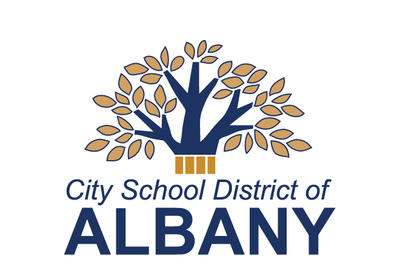Secondary Transition Services
Secondary Transition Services are a coordinated set of activities for a student with a disability that is focused on improving academic and functional achievement to facilitate the student’s movement from school to post-school activities. Such activities include, but are not limited to, post-secondary education, vocational education, integrated employment (including supported employment), continuing and adult education, adult services, independent living or community participation.
A successful transition process is based on the student’s strengths, preferences and interests, and requires collaboration between the school district, student, family and community agencies. Transition planning and services are designed to prepare a student with a disability to achieve their post-secondary goals related to living, learning and earning within the community. The City School District of 91福利导航 offers parent workshops and informational sessions related to transition services.
Exiting Diplomas and Credentials
You can for an overview of high school graduation requirements. Students with disabilities who participate in regular assessments have and additional opportunities () to earn a Regents or Local Diploma. Students with significant disabilities who are unable to earn a high school diploma can pursue an exiting credential: the Career Development and Occupational Studies (CDOS) Credential or the Skills and Achievement Commencement Credential (SACC). The SACC is available to students who are designated New York State Alternate Assessment (NYSAA). Learn more about credential options for students with disabilities by .
Vocational Assessments
A career or vocational assessment is a useful tool for educators and students to ensure a student’s interests and abilities are incorporated into the career decision-making process. Beginning at age 12 and for students referred to Special Education for the first time who are 12 and older, all students with disabilities are required to participate in a Level 1 vocational assessment that contains three components: a parent interview, student interview, and teacher assessment.
The first assessment is the starting point for planning for the student’s future. There are a variety of vocational assessments that can be used in the ongoing process of collecting data on student needs, preferences and interests. Beginning in the school year a student turns 15, the IEP must specify the vocational assessment administered. Common examples include the Career Cluster Survey and Pictorial Interest Inventory. In addition, there are new transition sections of the IEP staff complete to identify the programs, instruction and services that help facilitate the student in achieving the postsecondary goal.
For every student who will be graduating or aging out of high school, a Post Secondary Student Exit Summary is completed. This document details the student’s present levels of performance (i.e., accommodations, assistive technology, environmental modifications) and identifies the recommended supports and resources to achieve the postsecondary goals. A comprehensive exit summary is a tool that follows the student into adulthood and is used by agencies, providers and the family.
ACCES-VR
Adult Career and Continuing Educational Services - Vocational Rehabilitation or ACCES-VR is an organization that assists individuals with disabilities to achieve and maintain employment and to support independent living. The district transition coordinator works with students in their senior year of high school to submit a referral to ACCES-VR. Once a student is found eligible for ACCES-VR services, then a counselor is assigned to meet with the student and/or family to discuss employment goals and begin career planning. The majority of ACCES-VR’s services become available after a student has graduated or exited high school.
OPWDD
Students with significant developmental disabilities may be referred to the Office for People with Developmental Disabilities (OPWDD). The referral process begins as early as possible in life or when a student is found to have a qualifying diagnosis. Once eligibility is determined, OPWDD services begin while the student is still enrolled in school and continues into adulthood. Examples of services include supported employment and living, self-direction, respite, day habilitation and more. The transition coordinator, in conjunction with the student’s Special Education providers, collaborates to complete the referral to OPWDD.
Have questions?

Special Education Transition Coordinator




